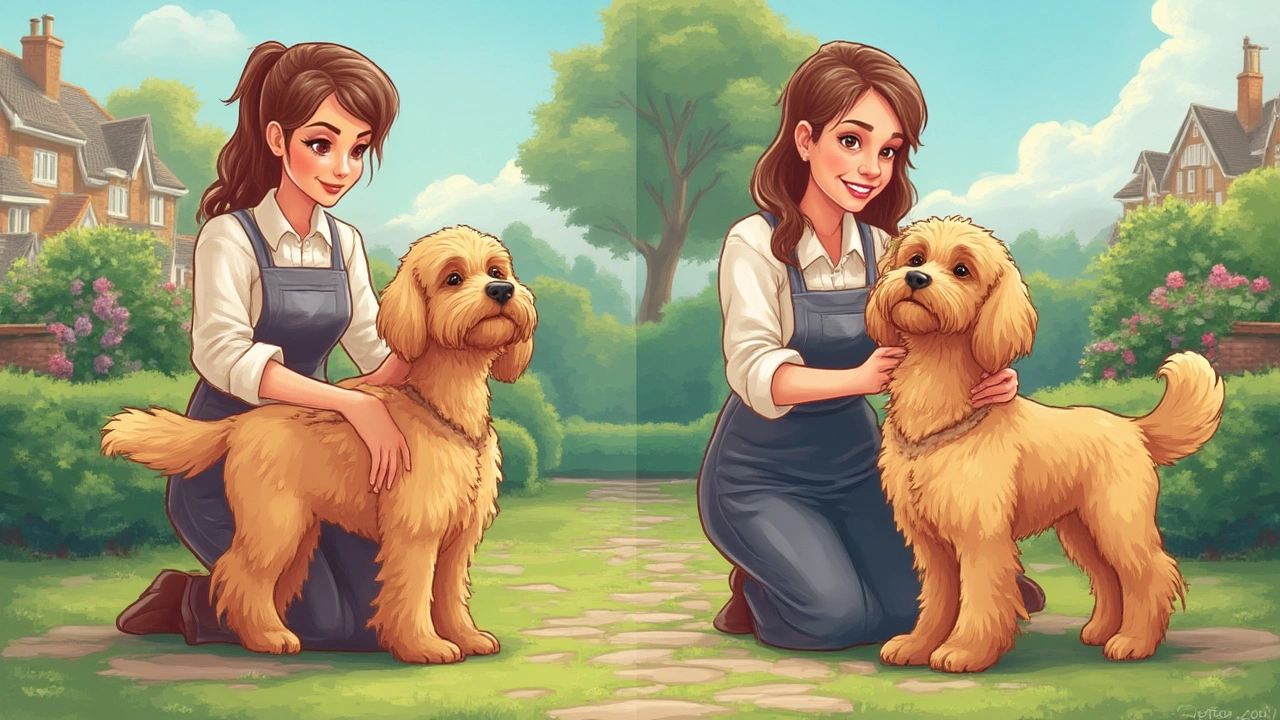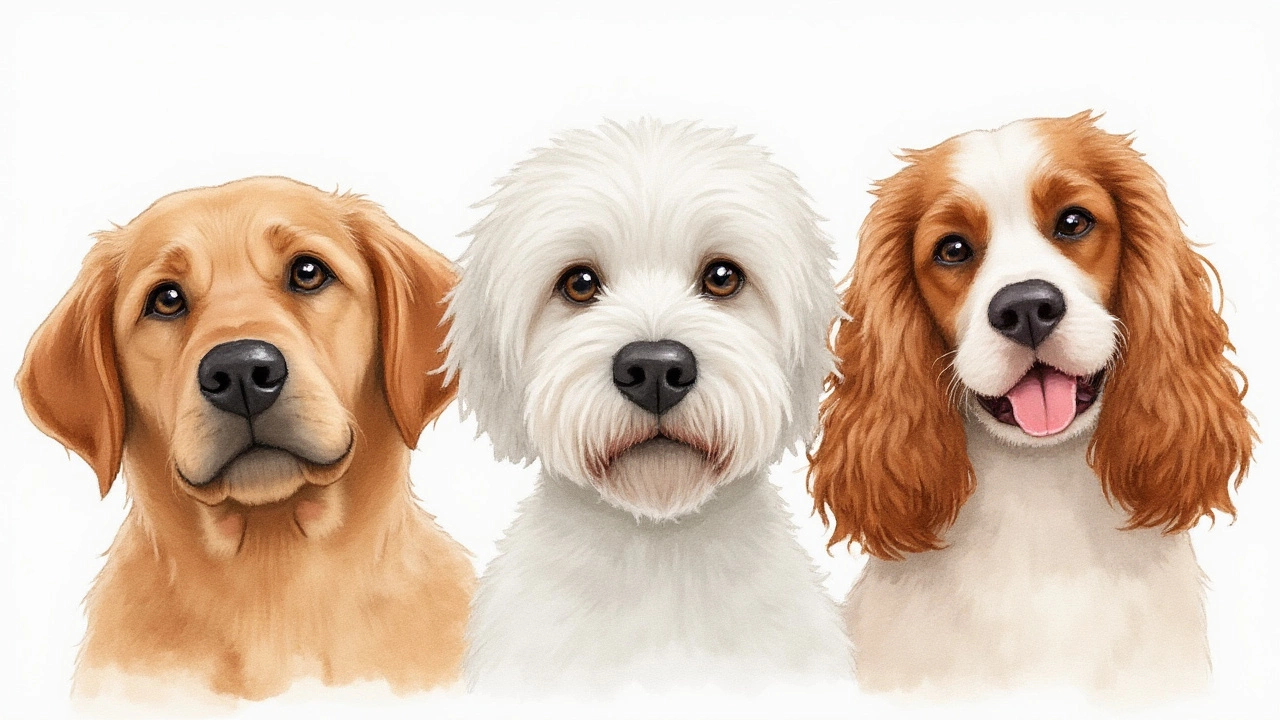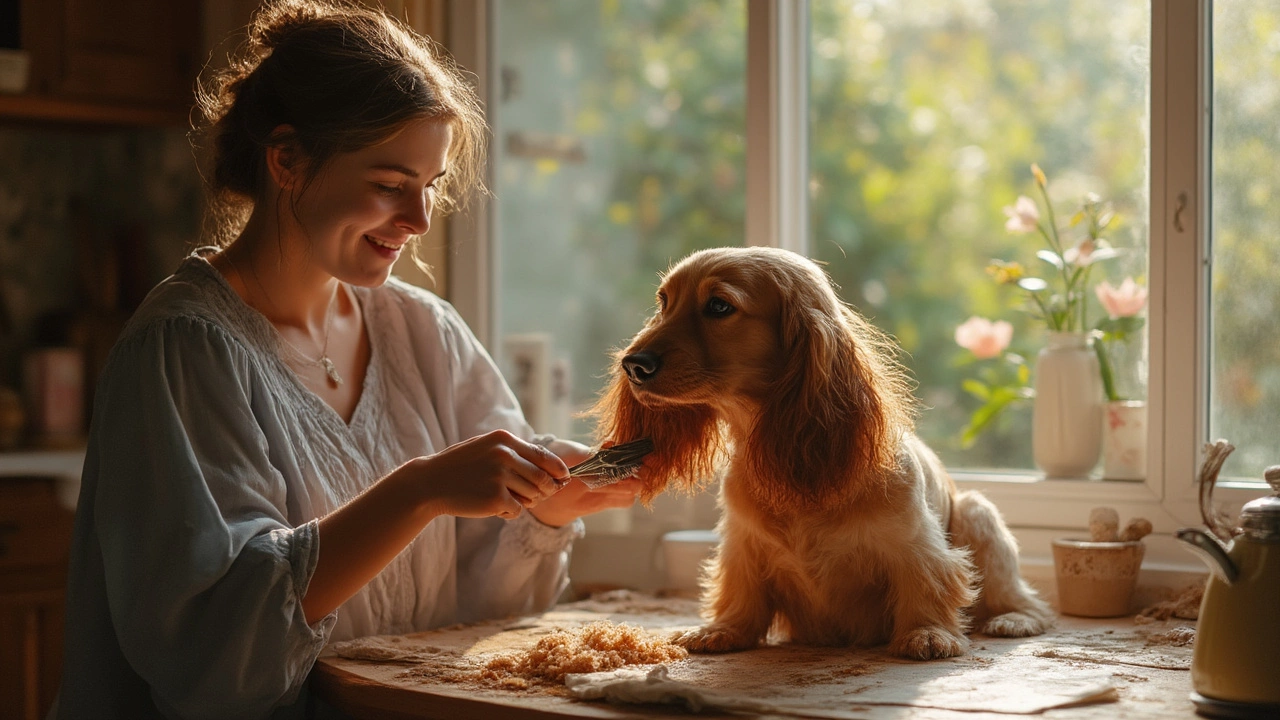Every dog owner gets curious about that moment—standing in the bathroom, scissors or clippers in hand, eyeing your fur baby and wondering, "Wait, should I cut my dog's hair while it's wet or dry?" The answer isn’t just a matter of taste. The choice can swing between convenience, safety, how your dog looks at the end of everything, and, honestly, how much fur winds up stuck to your clothes and walls. Turns out, groomers have split opinions, and dog breeds add their own set of rules to the mix. So, where does your pup fit in?
What Happens When You Cut Dog Hair Wet vs. Dry? The Science & The Struggle
Most professional groomers learn that the texture and structure of dog hair behaves pretty differently when damp compared to when it’s dry. But you know what? Not all dogs have the same kind of hair. Here's the kicker: just looking at your pup may not tell you if that hair’s going to flop, fuzz, or stick after a bath and a trim.
When fur is wet, it gets heavier, flattens out, and can even hide uneven growth, mats, or tangles you’d spot right away when it’s dry. Dry cutting means you see exactly where each snip lands, which is a huge plus if you’re a beginner or just terrified of ending up with a patchy dog. Scissor cuts on dry hair give direct feedback—you snip, and it stays that way, no surprises when it dries. But with wet fur? What you see isn’t always what you get. Drying can reveal hidden spots you missed or lines that look choppy. That’s why professional groomers working with show dogs or curly-haired breeds (think Poodles or Bichons) usually dry the coat before cutting.
But here’s where it gets complicated: some breeds are easier to trim when the hair is damp. Dogs with double coats, like Golden Retrievers, or those with thick, heavy fur, often mat or tangle like crazy if you cut them dry. Mats pull the hair, hurt the dog, and risk uneven cuts. Cutting a damp coat makes those mats easier to untangle, so there’s less tugging—and less drama. For some short-haired breeds, cutting wet says goodbye to all that flying fur. The clippers glide smoother, there’s less static, and you can go back with shears once things are dry for a finishing touch.
Check out this comparison:
| Wet Cutting | Dry Cutting | |
|---|---|---|
| Best for Coats | Thick, matted, double coats | Curly, fluffy, single coats |
| Visibility | Can hide flaws, less precision | See mistakes, easy corrections |
| Risk to Skin | Less - mats are looser when damp | More - mats pull skin, risk nicks |
| Time | Faster for detangling | Slower if lots of mats |
| Finish | May be uneven after drying | Smoother, more accurate finish |
Another fun (or is it annoying?) fact: cutting wet hair seriously messes with clippers. Clippers aren’t fans of moisture. Water makes blades dull faster, leads to tugging, and if you’re not super careful, they rust. Not what you want for those pricey Wahl or Andis sets.
So, what’s the verdict for most home groomers? Dry is safer if you want less surprise, especially for breeds that get that "fluffy teddy bear" effect when blow-dried. But, if you just gave a muddy retriever a bath or you’re dreading mats, a little dampness can save hours of pain (for both of you).

Breed-Specific Grooming: The Method Matters More Than You Think
Nobody talks enough about how much your dog’s coat type matters in *every* grooming decision—including whether you cut wet or dry. Curlier breeds (think Poodles, Portuguese Water Dogs, Bichon Frises) actually need their coat dried and brushed out straight before a haircut. It helps get that perfect, round look. If you try trimming these guys wet, you’ll likely miss spots, get uneven puffs, and honestly, your dog might look like a toddler grabbed some scissors.
Dogs with a wiry coat, like terriers, also look best when their hair’s dry. You get cleaner lines, and wire hair reacts badly to moisture, losing that signature texture. On the other hand, for breeds known for shedding tumbleweeds all over your house—think Labs or Shepherds—the wet method helps keep fur controlled, plus reduces allergens flying around.
Shedding breeds with thick double coats can benefit from partial wet cuts, where you bathe and lightly towel dry your dog, then get to trimming. This helps work through undercoat mats, which are more common in the spring and fall when they "blow coat." A professional groomer will often go for a combination: they’ll bathe the dog, blast most of the water out with a high-velocity dryer (which also explodes loose fur everywhere—watch out!), then finish the trim dry for a precise shape.
If you’re handling a nervous or senior dog, a lot of movement makes grooming a challenge. Cutting damp hair keeps the process quick and efficient, with less backtracking. Wet hair can be easier for dogs who have sensitive skin: less pulling, less heat from clippers, and less irritation. Still, if your clippers are not waterproof, you risk electrical safety issues—worth checking the specs before you try.
Some dogs simply can't sit still through a long fluff-dry session. If you only have a few minutes or your dog gets squirmy, a light, damp trim may be all you get. But double-check: for show standards or longer styles, almost everyone agrees—you need a dry coat to see the real contours of your dog’s body and make the right calls with length and style.

Pro Tips for Getting the Best Cut—Whatever Method You Choose
If you’re aiming for a stress-free haircut at home, planning matters more than anything. Regardless of wet or dry, it’s all too easy to end up with uneven fur, random nicks, or a dog who runs every time you pick up the scissors. Why risk a drama?
- Brush first, always. Get every tangle out before you trim, whether you’re cutting wet or dry. Mats are tough to see when wet and will make scissors or clippers snag and leave marks.
- Use sharp, high-quality tools. Dull scissors squish the hair (especially when wet), making for ragged lines. Clippers need to be oiled and cleaned—wet hair is notorious for clogging them up.
- If you’re new to grooming, start slow and go dry. Messed up a spot? You can always snip more, but you can’t put hair back on. For curly or fluffy breeds, use a comb and trim the hair as it stands away from the body—this gives that perfect, plush shape.
- Go wet only if your clippers are waterproof and meant for it. Otherwise, unplug and use scissors for damp cuts. Always avoid completely soaking the hair—towel dry to keep it just slightly moist.
- Be mindful of the skin. Wet hair hides skin folds and moles. Glide your hand over the coat as you trim, feeling for skin, and angle scissors away to avoid accidents.
- Work in natural light, or use a headlamp. Wet hair glares under some indoor bulbs and makes it hard to spot mistakes.
- Take frequent breaks. Cutting a full coat, especially dry, takes time and patience—and snacks for both dog and human don’t hurt.
Here’s an odd but useful tidbit: dog groomers wear sticky lint rollers as bracelets or keep them clipped to their belts. No joke. Static-charged dry hair and clumps of wet fur have a way of sticking absolutely everywhere. Cleanup is half the battle, so arm yourself with old towels and a lint roller before you start.
The topic has even made it into surveys of professional groomers. In a 2023 study by the American Professional Pet Groomers Association, about 72% of pros preferred dry cutting for curly and single-coated breeds, while about 68% used damp or wet cutting for heavy double coats. Most agreed: It rarely fits to say “one size fits all.” Grooming is part art, part science, and part you figuring out what keeps your dog happy (and cute).
The bottom line? There’s no universal right or wrong answer. The choice rides on your dog's coat, the tools you have, and what style you’re after. Whatever method you pick, prep well, keep your tools clean, and focus on your dog's comfort first. Honestly, your pup isn’t judging your grooming technique—just don’t forget the treats.
